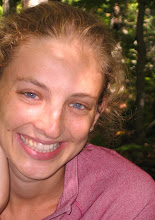 I walked into Metro Pictures knowing nothing about the work I was going to see, so I ventured asking one of the two receptionists behind the tall, minimal, reception table at the entrance, “what do you think about Catherine Sullivan’s work?” I have made similar inquiries repeatedly in my gallery visits, searching for more information than that provided by the press release. My questions usually lead to a few moments of discomfort and three or four short sentences pretty much paraphrasing the material already available on the artist. Yet this time, to my surprise, I found a very enthusiastic and involved interlocutor, ready to share with me the complex world of Catherine Sullivan’s Triangle of Need. Probably one of the receptionist’s greatest concerns was that I do not try to make sense of any of her work, as he warned me that there was no narrative and that actors spoke in an incomprehensible language designed for the piece by sound composer Sean Griffin. After his detailed briefing on the highly choreographed and well researched style of Sullivan’s work, he sent me on my way, pointing to the entrance door, and quickly correcting himself: “Although Sullivan would never tell you where to begin!”
I walked into Metro Pictures knowing nothing about the work I was going to see, so I ventured asking one of the two receptionists behind the tall, minimal, reception table at the entrance, “what do you think about Catherine Sullivan’s work?” I have made similar inquiries repeatedly in my gallery visits, searching for more information than that provided by the press release. My questions usually lead to a few moments of discomfort and three or four short sentences pretty much paraphrasing the material already available on the artist. Yet this time, to my surprise, I found a very enthusiastic and involved interlocutor, ready to share with me the complex world of Catherine Sullivan’s Triangle of Need. Probably one of the receptionist’s greatest concerns was that I do not try to make sense of any of her work, as he warned me that there was no narrative and that actors spoke in an incomprehensible language designed for the piece by sound composer Sean Griffin. After his detailed briefing on the highly choreographed and well researched style of Sullivan’s work, he sent me on my way, pointing to the entrance door, and quickly correcting himself: “Although Sullivan would never tell you where to begin!”With a brief introduction to Sullivan’s work, then, I walked into her three-room installation prepared for chaos and abstraction. Yet, while Sullivan’s looped videos do cause some confusion on first impact, the highly choreographed actions of her actors and the rhythm of her work, soon give away a high degree of sophistication. Not surprisingly, Sullivan, who was born in 1968, has trained both in acting and the visual arts in two important institutions: the California Institute of Arts and the Art Center College of Design. Her work, which focuses both on video and performance, explores the conventions of theatricality, as she picks apart the elements that make up performance, highlighting uncertainty and transformation. In one of the rooms of Triangle of Need, for instance, three separate screens play three different videos in black and white. Some of the elements in the videos, such as the Chaplinesque bowler hat worn by different performers, or the cut of the suits, create a vague sense of familiarity with the scene: we discern recognizable visual cultural elements. Yet soon, two Neanderthal like figures walk across one of the screens, as a woman in a tiara talks straight into the camera in incomprehensible sequences of consonants and vowels. The moment a scene appears to make sense, gain some meaning, a destabilizing element takes the spotlight and shifts the balance on the screen.
As a dancer, I was most intrigued by Sullivan’s body language. Known for cooperating with choreographers and dancers as well as artists across other art fields, in two of the three installations Sullivan has worked closely with the actors to create a vocabulary of gestures and movements reminiscent of what you might see in a mental institution, or in a room of autistic and paraplegic individuals. This is particularly true in a sequence filmed at the Vizcaya estate, an Italian Renaissance style estate built in the 1910’s by James Deering. Sitting around a dining room table, actors speak in Griffin’s language, while their eyes roll, their bodies contract and collapse, and their limbs move through the air in expressive yet incomprehensible movements. The actors, who sometimes seem to see each other, in fact rarely communicate directly except through touch.
This expressive body language greatly contrasts what I found in the last room of the exhibition I visited. In a smaller room than the first two, an old projection machine screens a single film with alternating scenes of a figure skater dancing on ice and images of Quinciñeras having their pictures taken out in the gardens of Miami. While the dissonant sounds of the installations nextdoor bleed in through the walls, this smaller room is relatively more quite and gentle than the first. Even visually, the single screen is easier to handle than the three and four multiple screens of the preceding installations. In the extreme juxtaposition of the last room with the first, I found myself highly conscious of Sullivan’s design of the exhibition, and spent some time hypnotized by the ice skater’s spinning before making one final transition, back into the streets of Chelsea.
Metro Pictures
February 7- March 15 2008
http://www.metropicturesgallery.com

No comments:
Post a Comment